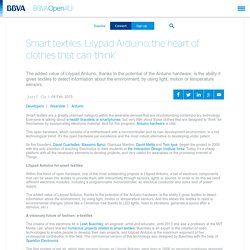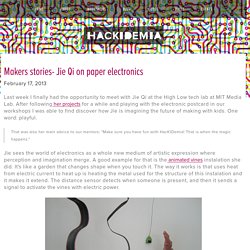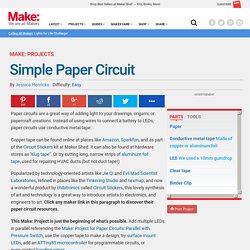

Marcelo Coelho. Des chercheurs impriment une mémoire sur du papier à lettre. Placer des circuits électroniques comme des étiquettes intelligentes ou des capteurs médicaux sur du papier est une quête de plusieurs ingénieurs.

Mais il manque souvent un élément clé, la mémoire, un composant qu’il plus difficile à intégrer sur une feuille de papier. Cette dernière est composée de fibres et à l’échelle microscopique l’aspect rugueux et poreux rend difficile la fixation de couches minces et uniformes qui caractérise les technologies mémoires comme la DRAM (dynamic random access memory) par exemple. Des chercheurs basés à Taiwan ont donc inventé une méthode utilisant la technologie jet d’encre pour imprimer une mémoire sur une feuille de papier ordinaire. L’équipe composée de Ying-Chih Liao, Si-Chen Lee, et Jr-Hau Il de l’Université de Taiwan ont utilisé de la RRAM (resistive RAM), un type de mémoire vive relativement nouveau qui doté d’une structure suffisamment simple pour supporter la rugosité de la cellulose. Smart textiles: Lilypad Arduino, the heart of clothes that can ‘think’
Smart textiles are a greatly unknown category within the wearable devices that are revolutionizing contemporary technology.

Everyone is talking about e-health bracelets or smartphones, but very little about those clothes that are designed to 'think' for themselves by incorporating electronic material. And for this progress, Arduino hardware is vital. This open hardware, which consists of a motherboard with a microcontroller and its own development environment, is a hot technological trend. It’s the open hardware par excellence and the most robust alternative to developing under patent. Its five founders, David Cuartielles, Massimo Banzi, Gianluca Martino, David Mellis and Tom Igoe, began the project in 2005 with the only intention of teaching Electronics to their students at the Interaction Design Institute Ivrea.
Lilypad Arduino for smart textiles A visionary future of fashion: e-textiles The creator of this electronic kit is Leah Buechley, an engineer, artist and educator. Flexinol Wire 0.006" HT. Jie Qi – Animated Vines. Jie Qi – Animated Vines. Jie Qi videos. Makers stories- Jie Qi on paper electronics — HacKIDemia. Last week I finally had the opportunity to meet with Jie Qi at the High Low tech lab at MIT Media Lab.

After following her projects for a while and playing with the electronic postcard in our workshops I was able to find discover how Jie is imagining the future of making with kids. One word: playful. That was also her main advice to our mentors: "Make sure you have fun with HacKIDemia! That is when the magic happens. " Jie sees the world of electronics as a whole new medium of artistic expression where perception and imagination merge. Source: Because there is no engine you can hear the sound of the movement, you can feel it and that's what makes this circuit so unique.
We also talked about how people will be able to prototype circuits directly in their agenda and create a story with them (more pictures here). Jie's first prototype for the electro-agenda Jie also told me she is excited about everything that is happening in electronics manufacturing in her home country, China. Simple Paper Circuit. Paper circuits are a great way of adding light to your drawings, origami, or papercraft creations.

Instead of using wires to connect a battery to LEDs, paper circuits use conductive metal tape. Copper tape can be found online at places like Amazon, Sparkfun, and as part of the Circuit Stickers kit at Maker Shed. It can also be found at hardware stores as “slug tape“. Or try cutting long, narrow strips of aluminum foil tape, used for repairing HVAC ducts (but not duct tape!) Popularized by technology-oriented artists like Jie Qi and Evil Mad Scientist Laboratories, refined in places like the Tinkering Studio and nexmap, and now a wonderful product by chibitronics called Circuit Stickers, this lovely synthesis of art and technology is a great way to introduce artists to electronics, and engineers to art. This Make: Project is just the beginning of what’s possible. When your LED stops lighting up, replace the battery. Download a one page paper circuit PDF here. Work with Shape-Memory Alloy.
We’re very pleased to have Jie Qi on MAKE for our Advanced Materials month (which has been extended until Feb 6). Her bio is so impressive, I thought I’d post the entire thing: I was born in China and moved to the US when I was 6… Fast forward to college at Columbia University. I started out a pre-medical/biomedical engineering major and spent a semester and summer doing tissue engineering research in the MBL group.
That same summer, I got an internship in Brooklyn building sculptures out of bottles for Aurora Robson, through which I fell in love with art again. So I changed my major to mechanical engineering (because they get access to the machine shop!) Jie put together this wonderful introduction to shape-memory alloy (SMA) for us. You’ve likely heard about shape-memory alloys (SMAs), metals that change shape when heated to an activation temperature. Marcelo Coelho. Shutters permeable surface developed by marcello coelho at the mit media labs.